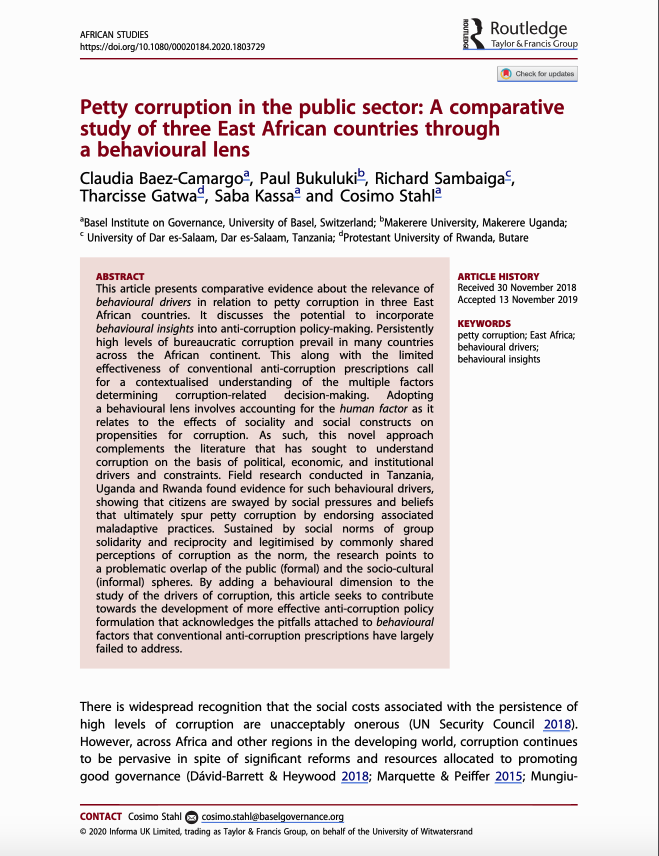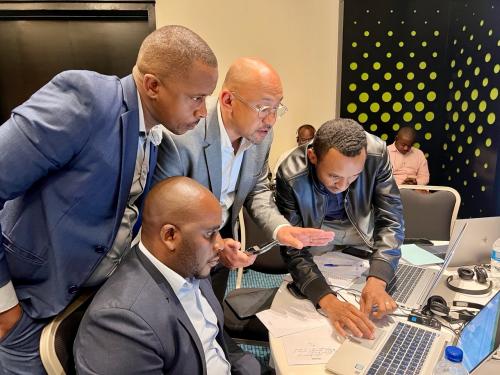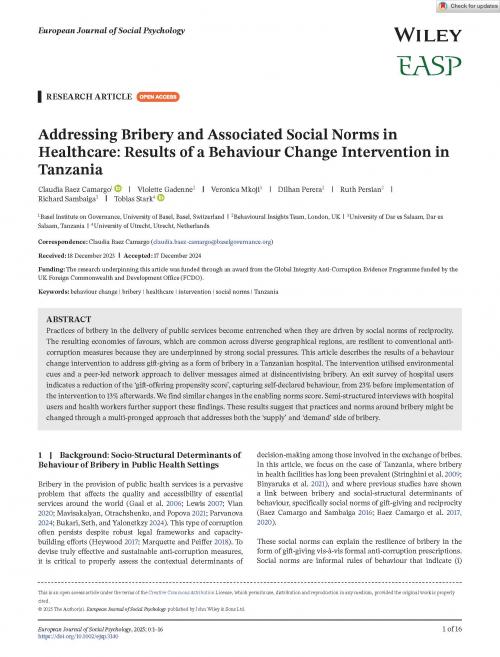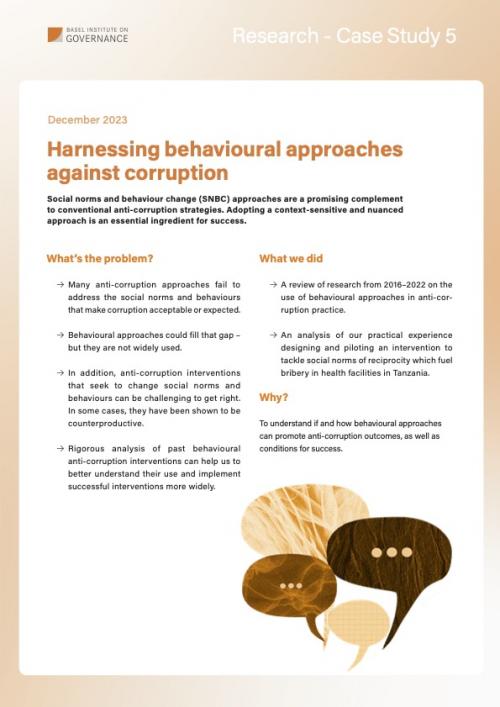Petty corruption in the public sector: A comparative study of three East African countries through a behavioural lens
This article presents comparative evidence about the relevance of behavioural drivers in relation to petty corruption in three East African countries. It discusses the potential to incorporate behavioural insights into anti-corruption policy-making.
Persistently high levels of bureaucratic corruption prevail in many countries across the African continent. This along with the limited effectiveness of conventional anti-corruption prescriptions call for a contextualised understanding of the multiple factors determining corruption-related decision-making.
Adopting a behavioural lens involves accounting for the human factor as it relates to the effects of sociality and social constructs on propensities for corruption. As such, this novel approach complements the literature that has sought to understand corruption on the basis of political, economic, and institutional drivers and constraints.
Field research conducted in Tanzania, Uganda and Rwanda found evidence for such behavioural drivers, showing that citizens are swayed by social pressures and beliefs that ultimately spur petty corruption by endorsing associated maladaptive practices. Sustained by social norms of group solidarity and reciprocity and legitimised by commonly shared perceptions of corruption as the norm, the research points to a problematic overlap of the public (formal) and the socio-cultural (informal) spheres.
By adding a behavioural dimension to the study of the drivers of corruption, this article seeks to contribute towards the development of more effective anti-corruption policy formulation that acknowledges the pitfalls attached to behavioural factors that conventional anti-corruption prescriptions have largely failed to address.
The article was published in the open-access African Studies journal on 19 August 2020.
Links and other languages




